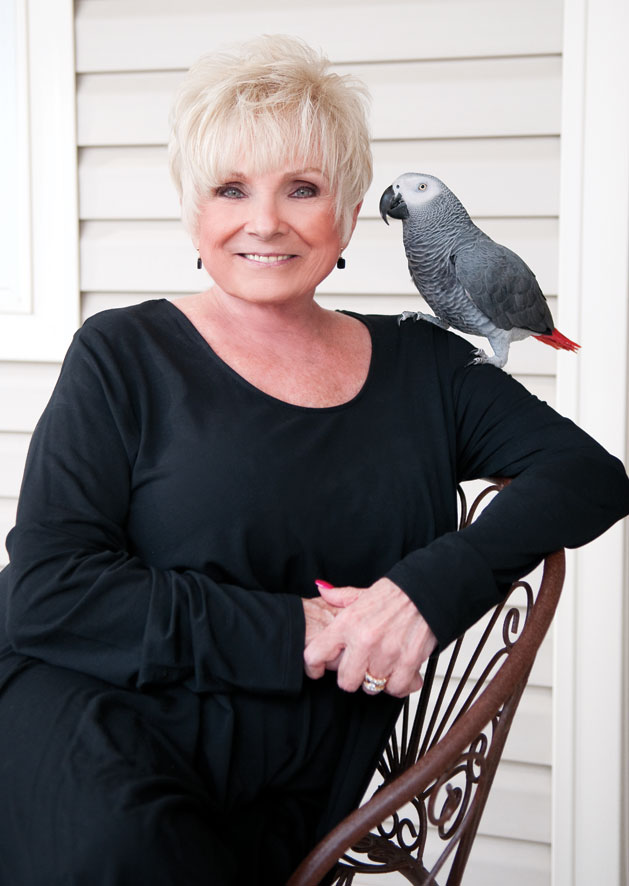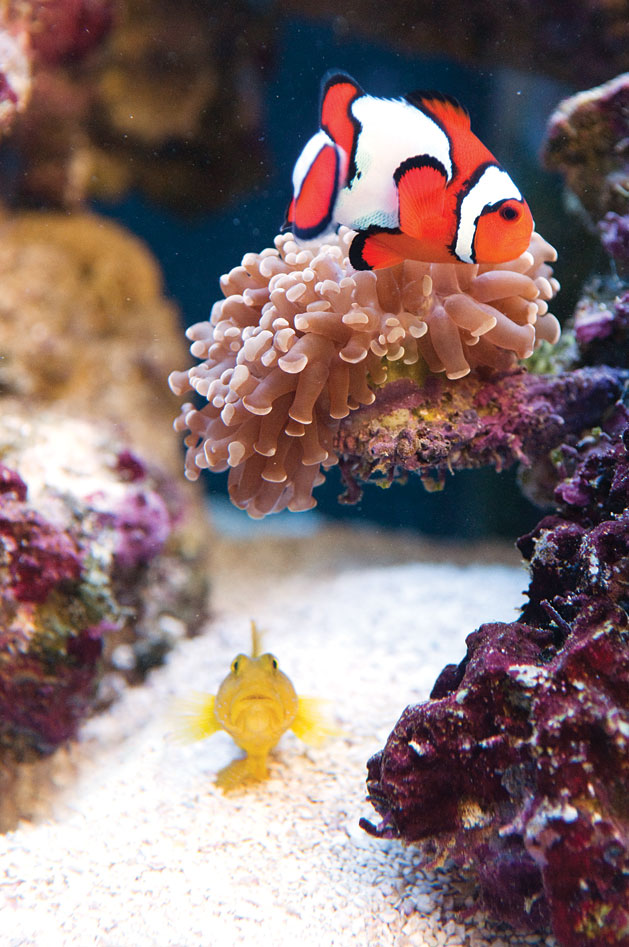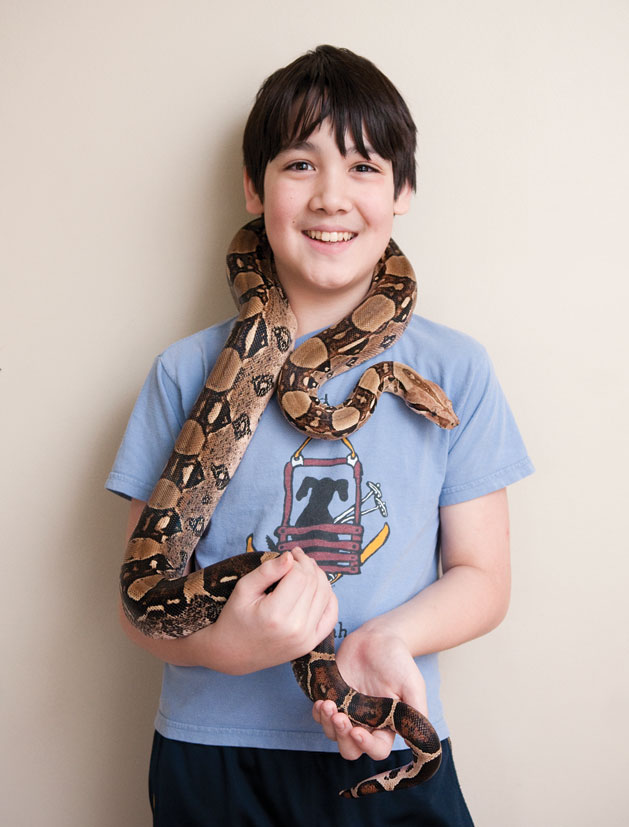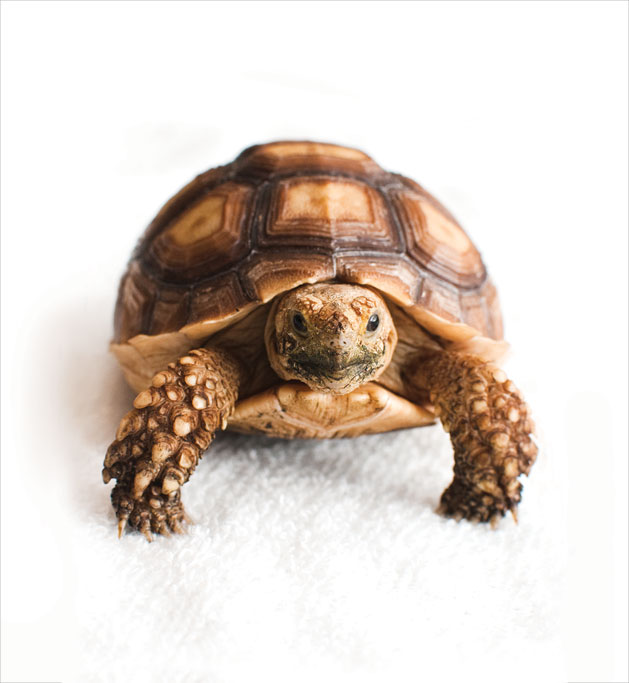Whether they’ve got fur or fins we love our pets. Maple Grove area pet owners have some very interesting tales of how they came to own such interesting animals and why they love them—no matter their exterior. Here are a few:
Fur
Todd and Stacy Sparks
Pet: Sable Ferrets
Name: Mollie and Nugget
Average life span: 6-8 years
If Todd Sparks is missing his car keys, he almost instinctively knows where to find them—sequestered with Mollie or Nugget. Not only do his playful ferrets love to hide things (and hoard things) they often hide themselves.
The Sparks have found the ferrets hiding in sofa cushions, dresser drawers and their gym bags. Sometimes a closet is opened to find Nugget at eye level after climbing shelving to find just the right spot to nap. (Little known fact: Ferrets sleep so soundly they can be mistaken for being deceased.)
It all started with the movie Beastmaster, in which the handsome hero and his animal allies wage war against marauding forces. Todd’s interest in ferrets was ignited and he spent years as a youth learning more about them.
During the past 16 years he and his wife, Stacy, have provided homes for eight ferrets. Mollie arrived six years ago after being shuffled through previous homes and labeled “difficult”—a description the Sparks strongly disagree with. “She is sweet and very inquisitive,” says Stacy.
Mollie is now in her senior years so she moves a bit more slowly, hampered by some arthritis. Nugget, however, has yet to pass three years of age and is an agile climber, readily scaling furniture, clothes baskets and the bathtub.
He was abandoned, taped shut in a cardboard box and left on the doorstep of a dog grooming salon. He was cold, dirty, dehydrated and teaming with fleas. Looking at him now, you would never guess he survived such an experience
The Sparks stress that ferrets are not for everyone.”They are not a pet to leave in a cage indefinitely. They can be nippy, squirmy, and masters of escape requiring constant surveillance.”
While enjoying these ferret’s personalities, the Sparks keep vigilant to their tricks. “They have stolen our wallets, towels, lunch sacks, socks, shoes and food out of the refrigerator when we turned our back on them for a second. It is always an adventure at our house and it is an adventure we love.”

Feathers
Mary Karlquist
Pet: African Gray Parrot
Name: Digger
Average life span: 60 years
Digger is smart. Digger can skate. Digger has perfect pitch. Can you say as much about your other neighbors?
Mary Karlquist, has been Digger’s companion since he hatched 22 years ago. He shares her with four other birds that are also well loved and well trained.
“I learned that these fuzzy balls of feathers were bright and funny and they talked to you,” Karlquist remembers. Sold on the idea of breeding and raising birds (termed an aviculturist) she has since helped dozens of new bird families along with serving as president of the Minnesota Companion Bird Association.
For many years, Karlquist took her avian friends into schools with a focus on environmental issues and saving the rain-forest. As she taught the birds to do fun behaviors like roller skate, play basketball, do somersaults, run through mazes and talk on cue, it added a new dimension to her presentation for children.
Widely regarded to be the most intelligent of birds, African greys originally come from the rainforests of West and Central Africa. Birds are relatively new as pets; they’ve been studied as companions for a mere 45 years. “In comparison, we've been studying dogs, cats and horses for hundreds of thousands years,” Karlquist says.
Adopting a bird is a huge commitment. “You would never buy a puppy and not learn how to train it properly,” remarks Karlquist, who assures that birds can learn anything a three year old child can learn.
“Digger is a remarkable companion—he makes me smile and laugh every day of my life.”

Fins
Ryan Turner
Pet: Labroids (commonly known as wrasses)
Name: None (ever!)
Average life span: 2-5 years
It wasn’t the movie Finding Nemo that first interested Ryan Turner in fish, but the first pair of fish he owned were, indeed “Nemo” (clown) fish, except Turner shies away from giving his fish names. “It would seem that when a fish is named,” he claims, “it usually ends up passing away.”
After five years of nameless (but live) fish, Turner’s aquarium-keeping has grown from a hobby to an obsession.
He has fish distributed through three salt water tanks that burst with tropical color. His large coral tank houses eight different kinds of fish (like bright yellow gobies and orange and blue filefish, and yes, a purple “Dory” fish) and a large assortment of acropora corals. A “soft coral” tank sports five other types of fascinating, finned creatures and leather corals.
Turner finds aquaculturing coral to be particularly rewarding because “it helps to sustain a species that will most likely be completely extinct in 100 years.”
His favorite fish are wrasses. Known for their bright colors, they are known by fantastical names like red velvet fairy wrasse and Pyle’s fairy. Interestingly, they are carnivorous. “The temmincki wrasse will actually eat out of my hand, and sometimes accidentally nip my fingers,” Turner explains.
His last tank is used to grow small shrimp for the fish to eat. It also houses a pair of bluestripe pipefish—a tiny, odd looking creature that Turner hopes to be one of the successful few to breed.

Scales
Kaelan and Lily Leahy
Pet: Red-tailed Boa Constrictor
Name: Severus
Average life span: 20-30 years
You can spot Harry Potter fans by their accoutrements. Kaelan and Lily Leahy, who attend Beacon Academy in Maple Grove, don’t wear striped neck scarves to school, nor do they have quiddich brooms, but they do have a very big snake named Severus.
Its arrow-shaped head and distinctive markings send some people backing away. For these siblings he’s the perfect pet for snuggling in front of the TV or curling up with a good book.
Although snakes don’t have an attachment to people, they are attracted to warmth and need to be handled regularly to remain tame.
Boas can be found in the wild from Mexico through South America. In the Leahy household Severus enjoys a heated aquarium, safe from Minnesota winters. “He eats Purina snake chow,” Kaelan jokes, followed by the exacting recipe of “one medium rat every three weeks.”
At more than five feet long, Severus has downed quite a few rodents during his eight years and is bound to devour many more on his way to a full length of 15 feet.
Another of his distinctive features is a rare, salmon-colored belly. “He can smell with his mouth too,” adds Lily, referring to the sensing organ found in the roof of a boa’s fanged cavity.
Severus could be around for many years after the Harry Potter series has fallen out of favor with adolescent adventure seekers. But Kaelan and Lily’s mother, June, says that once the kids are old enough to leave the house, they are sure to fight over him.

Shell
Linda Brodzik
Pet: Sulcata Tortoise
Name: Darwin
Average life span: 50-80 years
“Slow and steady win the race” and Linda Brodzik will have a long journey with her sulcata tortoise, Darwin.
Hailing from the southern edge of the Sahara desert, the sulcata is the largest species of mainland tortoise in the world. “He [Darwin] may be 100 pounds by the time he is 25 years of age,” says Brodzik.
And what must he consume to grow this big? “Orchardgrass,” explains Brodzik. “He also eats dark leafy greens such as spinach and kale...but only from my hand as I am training him to perform specific behaviors.”
The thought of a tortoise heeling may seem funny but Brodzik has successfully trained dogs, cats, exotic birds, goldfish, pigs, a goat, horses and even a tarantula.
Darwin’s first seven months in a hatchery left him shy and afraid of humans. Each time Brodzik came near his habitat, or when he heard her voice, he would tuck himself tightly inside his shell. Six months later, he is walking onto her open palm.
Next on the list of behaviors includes orienting towards a target, turning his head left, lifting his front right leg and lowering his head.
Brodzik hopes to use Darwin as a "therapy" animal and when teaching children positive communication skills and problem solving via animal training. Different kinds of animals allow for a connection with different children—some might bond with dogs, others with an ever growing tortoise.”
“Teaching him to crawl up and down a ramp now will make it easier to get him into the back of my Jeep,” explains Brodzik. “Of course teaching him to bow his head and pray as well as push a ball and play soccer is just plain fun!”







